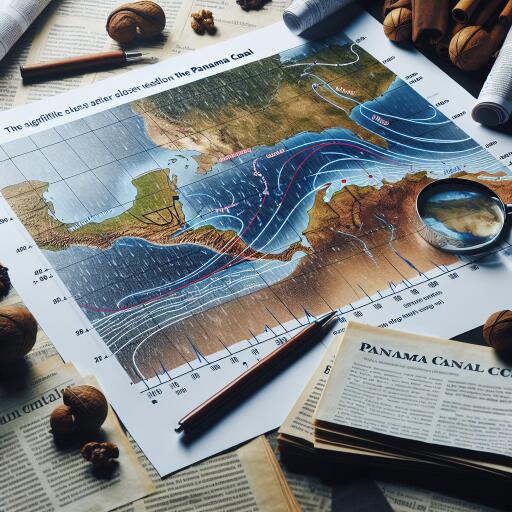
Exploring the Real Culprit Behind Panama Canal’s Shipping Disruptions
Recent disruptions in shipping across the Panama Canal have sparked a vigorous debate among scientists and climate analysts. In a groundbreaking study, it has been unveiled that El Niño, a natural climate phenomenon characterized by the warming of the central Pacific Ocean, played a significant role in the decreased rainfall levels last year, impacting canal operations. The revelation comes at a time when climate change often finds itself at the center of such environmental anomalies.
El Niño is known for its far-reaching influence on global weather patterns, affecting various regions in peculiar ways. From droughts to floods, its presence is felt globally, making it a subject of interest and concern among meteorologists and climatologists. The study in question sheds light on the intricate workings of these natural processes, revealing that El Niño effectively doubled the chances of the reduced precipitation witnessed in Panama during what would typically be the rainy season.
This finding is crucial as it diverges from the common narrative that human-induced climate change is often the primary driver behind such ecological events. The researchers reached their conclusion after a meticulous comparison of the observed rainfall patterns with climate models. These models simulate weather conditions under varying levels of global warming, both current and historical. The analysis provides a nuanced understanding of how natural and human factors are intertwined in influencing our planet’s climate systems.
While the study recognizes the significant role of El Niño in this instance, it does not completely absolve climate change from having an impact on global weather phenomena. The complex relationship between these natural events and anthropogenic climate influence requires further exploration. Understanding the distinctions and interactions between natural climate phenomena like El Niño and human-induced climate change is vital for developing more accurate forecasting tools and implementing effective response strategies.
The impact on the Panama Canal, a critical conduit for maritime trade, highlights the broader implications of such climate-related disruptions. It serves as a reminder of the vulnerability of our global infrastructure to the whims of weather and the need for adaptive measures that can mitigate these risks.
In conclusion, the study provides a compelling case for the significant influence of natural climate phenomena, like El Niño, in shaping our weather patterns and, by extension, affecting human activities such as shipping through the Panama Canal. It calls for a balanced perspective in attributing ecological events to climate change, emphasizing the importance of understanding the roles played by various factors in the complex equation of global weather dynamics.
As research continues to unravel the mysteries of our climate, it is imperative that we remain open to insights that challenge prevailing assumptions and push the boundaries of our knowledge. Only then can we hope to effectively tackle the challenges posed by climate variability and safeguard our future against its unpredictable impacts.





Leave a Reply